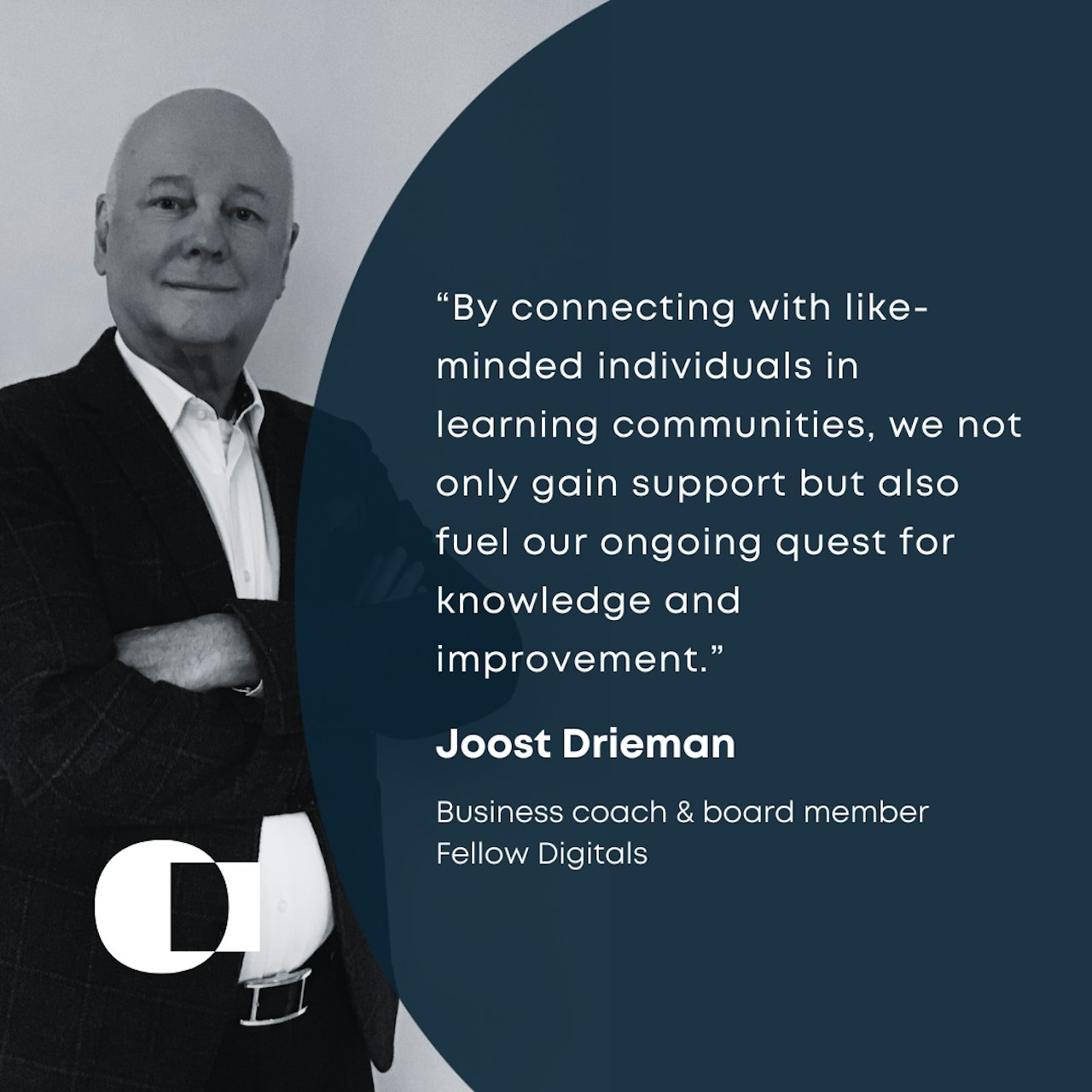Creating vibrant learning communities: A path to continuous growth
Blog | Joost post series #08

In our series "Building a Healthy Work Environment," Joost Drieman, our esteemed senior certified coach and business advisor with over 35 years of experience, explores the transformative power of Learning Communities. In this edition, we’ll dive into how these communities can drive personal and professional development, fostering a culture of continuous learning and collaboration.
What Are Learning Communities?
Learning Communities are groups where individuals come together to share knowledge, discuss ideas, and support each other’s growth. These communities can be formal or informal and might include teams within a company, professional networks, or online groups. The key is that they provide a structured environment where continuous learning and improvement are prioritized.
Why Are Learning Communities Important?
1. Fostering Collaboration: Learning Communities create a space where members can collaborate and exchange ideas, leading to innovative solutions and improved problem-solving.
2. Encouraging Continuous Learning: They provide ongoing learning opportunities beyond traditional training sessions, keeping members engaged and up-to-date with the latest trends and best practices.
3. Building Support Networks: By connecting with like-minded individuals, members gain access to a support network that can offer advice, encouragement, and diverse perspectives.
4. Enhancing Professional Development: Members can take on leadership roles within the community, helping them develop new skills and advance their careers.
How to Build a Successful Learning Community
1. Define Clear Objectives: Establish what you want to achieve with your Learning Community. This could include skill development, knowledge sharing, or fostering innovation.
2. Create a Collaborative Environment: Encourage open communication and active participation. Use tools and platforms that facilitate collaboration, such as discussion forums, video meetings, and shared resources.
3. Provide Valuable Content: Offer resources that are relevant and beneficial to members, including articles, case studies, and expert insights.
4. Foster Engagement: Use interactive elements like webinars, workshops, and group projects to keep members engaged and motivated.
5. Encourage Networking: Facilitate opportunities for members to connect and build relationships both within and outside the community.
6. Regularly Review and Improve: Gather feedback from members and continuously refine the community’s activities and resources to ensure they remain relevant and effective.
The Golden Tip
Nurture a culture of openness and inclusivity. A successful Learning Community thrives on diverse perspectives and mutual respect, creating an environment where everyone feels valued and empowered to contribute.
Conclusion
Building a vibrant Learning Community can transform the way we approach personal and professional development. By fostering collaboration, continuous learning, and mutual support, these communities become powerful tools for growth and innovation. Start creating or enhancing your Learning Community today, and watch as it becomes a cornerstone of your continuous improvement journey.

We love to share our knowledge with you
Related blogs



